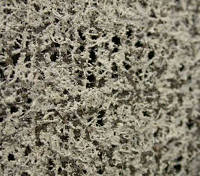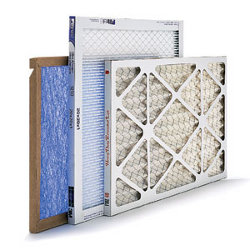The Importance of Air Quality

Airborne Particles
There are three basic approaches to improving indoor air quality
You can (1) control or eliminate the source of pollutant, (2) dilute the contaminant, usually through ventilation, or (3) remove the contaminant from the air by filtration. You can’t always reduce or eliminate the air contaminant source. Ventilation can be a good approach, but the source of contaminant may be in the outside air itself. This is especially true if your home is located near busy roadways. Also, ventilation can raise the cost of conditioning the air, since you may be required to heat or cool more air than before. When control and vventilation are not practical, filtration becomes an important option.
Filtration of sub-micron particles is not always easy. Most air filters are not designed to remove the fine particles from the air stream. The filters that come standard with a house furnace, or even commercial heating and air conditioning equipment, are not efficient at the removal of the fine particles. In fact, they are designed to protect the equipment from the larger particles, and do nothing at all to protect occupants.
When you need to remove harmful fine particles from the air, make sure you select a filter or filtration device that is specifically tested for its ability to remove very small particles. Some air filtration products state high efficiencies, but are really stating the capacity for holding dirt according to a percentage of total weight. This does not guarantee you will be able to filter out a corresponding high percentage of the fine particles. In a given sample of indoor air, about 98.5% of the number of particles present will be 1 micron or smaller in diameter. If you need to remove sub-micron particles, make sure the product you are evaluating has been tested specifically for its ability to remove particles in the 2.5 micron range and smaller.
Poor IAQ is expensive
There are three basic types of filtration methods in use today
 Passive filters use a fibrous filtering material. They can range from very inefficient to highly efficient HEPA filters. Generally, the cheaper they are and the less air resistance they have, the less effective they are. The higher the air resistance, the more energy is required to overcome the airflow resistance, contributing to higher energy costs to operate. If a passive filter is too restrictive, it can cause damage to mechanical equipment.
Passive filters use a fibrous filtering material. They can range from very inefficient to highly efficient HEPA filters. Generally, the cheaper they are and the less air resistance they have, the less effective they are. The higher the air resistance, the more energy is required to overcome the airflow resistance, contributing to higher energy costs to operate. If a passive filter is too restrictive, it can cause damage to mechanical equipment.
Electronic, corona discharge filters electrically charge particles passing through them, then attract the particles to a series of grounded collector plates where the dirt accumulates. The collector is then removed for cleaning. Unlike passive filters that become more efficient as they load, corona discharge devices tend to become less efficient as they load, especially if the cleaning regimen is not maintained properly. When they become dirty, arcing may occur which can cause the production of ozone, which the EPA has identified as being harmful to health.
 Active electronic, polarized media filters, such as Dynamic, represent the third major group of air filtration devices. This newer technology uses an electrical charge (safe, 24 volt current in the case of Dynamic) to establish a polarized field. Airborne particles pass through the field and adhere to the media. Like a passive filter, polarized media filters increase in efficiency as they load. Designed for use primarily in recirculating systems, polarized media filters can provide very high efficiency with a static pressure drop much lower than passive filters claiming a similar efficiency. This may lead to a decrease in energy consumption. Unlike corona discharge devices, the Dynamic cannot produce ozone, and maintenance is easy with periodic replacement of a disposable media.
Active electronic, polarized media filters, such as Dynamic, represent the third major group of air filtration devices. This newer technology uses an electrical charge (safe, 24 volt current in the case of Dynamic) to establish a polarized field. Airborne particles pass through the field and adhere to the media. Like a passive filter, polarized media filters increase in efficiency as they load. Designed for use primarily in recirculating systems, polarized media filters can provide very high efficiency with a static pressure drop much lower than passive filters claiming a similar efficiency. This may lead to a decrease in energy consumption. Unlike corona discharge devices, the Dynamic cannot produce ozone, and maintenance is easy with periodic replacement of a disposable media.